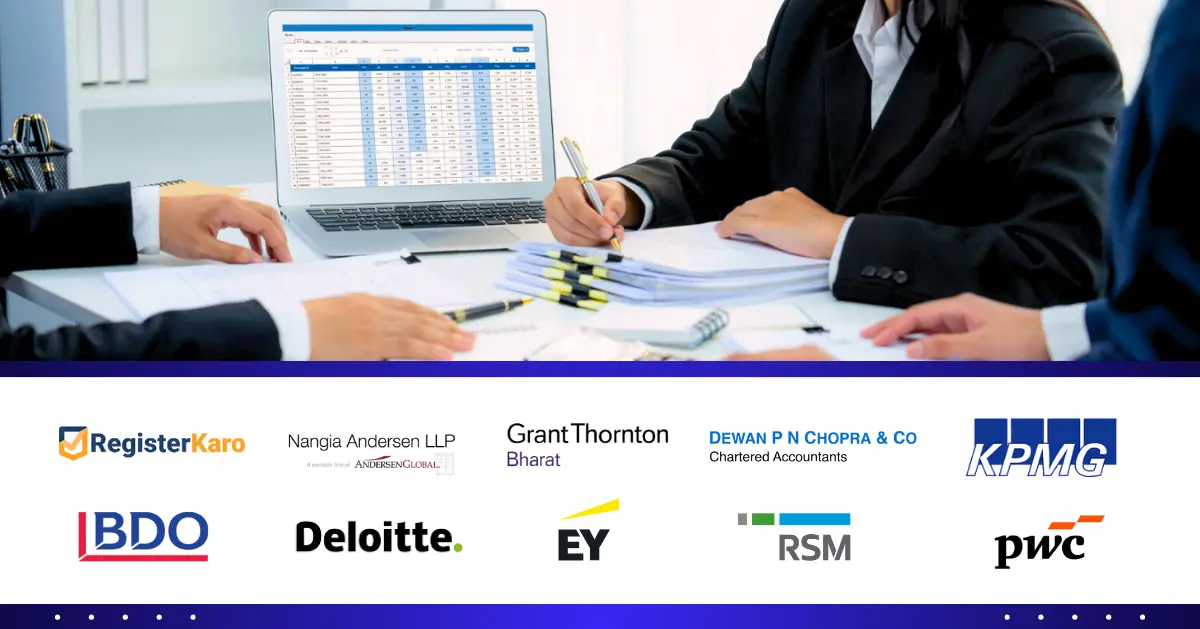
Introduction: The Role of Capital in Accounting
In any business, understanding capital is key to making informed decisions regarding funding, operations, and future growth. Capital in accounting refers to the financial resources a company uses to fund its operations, investments, and long-term goals. These resources can be in the form of cash, assets, or financial instruments that contribute to the profitability, liquidity, and financial health of the organization.
Capital is crucial because it serves as the backbone for every financial move a company makes. Whether used to purchase equipment, pay for labor, or support operations during a downturn, the available capital determines how well a business can withstand financial challenges and expand over time. This makes it a fundamental component in accounting, business finance, and overall corporate structure.
Key Takeaways:
- Capital in accounting represents the financial foundation of a business.
- It’s used to fund operations, invest in growth, and maintain financial stability.
- There are different types of capital, each playing a critical role in business management.
- Proper management of capital is key to ensuring a company’s financial health and growth.
What is Capital in Accounting?
In accounting, capital is the monetary resources used to finance a company’s operations and investments. It includes money and assets that contribute to the generation of revenue and the growth of the company. Capital is typically provided through personal investments, loans, or by issuing shares in the case of corporations.
There are three primary forms of capital in accounting:
- Fixed Capital
- Working Capital
- Equity Capital
Each of these types serves a distinct function in supporting the operations and expansion of a business.
Types of Capital in Accounting
Understanding the different types of capital in accounting is crucial for businesses to manage resources effectively and ensure long-term sustainability. Below, we’ll dive deeper into each category.
1. Fixed Capital: Long-term Investments
What Is Fixed Capital? Fixed capital refers to the long-term assets or resources that a business uses to produce goods or services. These assets typically have a longer lifespan and are not consumed in the short term. The capital invested in fixed assets provides the foundation for a company’s production capabilities.
Examples of Fixed Capital in Accounting:
- Buildings and infrastructure
- Machinery and equipment used for manufacturing
- Land and real estate
- Vehicles for business operations
Why It’s Important: Fixed capital is critical for maintaining production capacity and supporting the long-term goals of a business. Investments in fixed capital help companies enhance operational efficiency and increase their ability to generate profit over time.
2. Working Capital: Day-to-Day Operations
What Is Working Capital? Working capital represents the funds necessary to manage the daily operations of a business. It’s the difference between current assets and current liabilities and indicates the short-term financial health of a business. Essentially, it determines whether a business can pay its short-term debts and expenses without securing external funding.
Formula for Working Capital: Working Capital = Current Assets – Current Liabilities
Examples of Working Capital in Accounting:
- Cash and cash equivalents
- Accounts receivable (money owed by customers)
- Inventory held for sale
- Accounts payable (money owed to suppliers)
Importance of Working Capital: Efficient management of working capital ensures a company can continue to operate smoothly and avoid financial strain. A positive working capital allows businesses to invest in new opportunities or cover unexpected costs.
3. Equity Capital: Investment from Owners and Shareholders
What Is Equity Capital? Equity capital represents the funds invested by business owners or shareholders. This type of capital is typically used to finance long-term business strategies and growth opportunities. Equity capital is different from debt, as it doesn’t require repayment, but rather, owners share in the risks and rewards of the business’s performance.
Examples of Equity Capital in Accounting:
- Owner’s equity in a sole proprietorship or partnership
- Shareholder equity in a corporation
- Retained earnings reinvested into the company
Why It Matters: Equity capital is integral to a company’s corporate structure. It provides the foundation for ownership control and decision-making authority. Additionally, it’s a primary source of funding that doesn’t involve incurring debt.
How Is Capital Recorded in Financial Statements?
Understanding how capital is recorded in financial statements is essential for transparency, compliance, and effective financial management. Here’s how capital in accounting appears across the main financial statements:
1. Balance Sheet:
In the balance sheet, capital is categorized under the “Equity” section, which includes items like:
- Shareholder’s equity
- Retained earnings
- Other reserves
This section reflects the overall value of the company, derived from the owner’s contributions and accumulated profits.
2. Income Statement:
Though capital itself is not recorded directly on the income statement, its impact is visible. For example, investments in capital expenditures (like machinery or equipment) might show up as depreciation over time, impacting profit margins.
3. Cash Flow Statement:
Capital investments and withdrawals are recorded in the cash flow statement, particularly under the financing activities section. This section tracks how money flows in and out of the business from capital-related activities.
Difference Between Capital and Revenue Expenditure
Capital Expenditure vs. Revenue Expenditure
There’s an important distinction between capital and revenue expenditure in accounting:
| Feature | Capital Expenditure | Revenue Expenditure |
| Purpose | Long-term investment | Day-to-day expenses |
| Examples | Buying machinery, land, buildings | Salaries, rent, utility bills |
| Accounting Treatment | Recorded as an asset and depreciated over time | Recorded as an expense in the income statement |
| Impact | Enhances future earning potential | Supports current operations |
Understanding this difference helps businesses make better financial decisions and manage their resources effectively.
Impact of Capital on Business Growth and Valuation
Capital in accounting is directly tied to a company’s ability to grow and increase its market value. Here’s a breakdown of its impact on business development:
1. Business Expansion:
Adequate capital enables businesses to:
- Expand operations and facilities
- Invest in technology to improve productivity
- Hire skilled professionals to drive innovation
- Enter new markets and increase customer base
2. Financial Stability:
A solid capital base helps businesses weather economic downturns and manage cash flow gaps. With strong capital reserves, businesses are better positioned to attract investors, secure loans, and stay financially solvent.
3. Increased Business Valuation:
Investors closely monitor a company’s capital structure when determining its valuation. A well-capitalized business typically enjoys a higher market valuation due to its reduced financial risk and potential for growth.
Capital Structure and Its Importance in Financial Planning
Capital structure refers to the mix of debt and equity used by a company to finance its operations. The right balance between these two sources of capital is crucial for maintaining financial health and ensuring the long-term success of the business.
Components of Capital Structure:
- Debt Financing: Borrowing money through loans or issuing bonds.
- Equity Financing: Raising funds by selling shares or through retained earnings.
Importance of a Well-Balanced Capital Structure:
- Reduces Financial Risks: A strategic mix of debt and equity helps reduce the risk of over-leveraging.
- Optimizes Tax Benefits: Debt financing can offer tax advantages since interest payments are tax-deductible.
- Improves Creditworthiness: A balanced capital structure strengthens a company’s credit profile, making it easier to secure financing.
Conclusion: The Importance of Managing Capital in Accounting
Understanding the role of capital in accounting is essential for any business, regardless of size or industry. Capital enables businesses to finance operations, expand, and weather financial challenges. From fixed capital to equity capital, each type has a vital role in ensuring long-term sustainability and profitability.
Proper management of capital—through efficient financial planning, strategic investment, and balancing equity and debt—is fundamental to business success. By continually assessing and adjusting capital investments, businesses can not only meet immediate financial needs but also position themselves for future growth.
Why Choose RegisterKaro?
Managing capital in accounting can be complex, but with expert guidance from RegisterKaro, you can navigate these challenges effectively. Whether you’re seeking assistance with financial planning, business registration, or ensuring compliance with accounting standards, our professionals are here to help.
Contact Us Today: Email: support@registerkaro.in
Frequently Asked Questions (FAQs)
- What are retained earnings, and how do they relate to capital?
- Retained earnings refer to profits a business reinvests rather than distributing to shareholders. It strengthens equity capital and boosts financial stability.
- Retained earnings refer to profits a business reinvests rather than distributing to shareholders. It strengthens equity capital and boosts financial stability.
- How does depreciation affect capital?
- Depreciation reduces the value of fixed assets, impacting a business’s capital reserves and accounting records.
- Depreciation reduces the value of fixed assets, impacting a business’s capital reserves and accounting records.
- Can a business operate without equity capital?
- Yes, but it increases financial risk. Debt financing alone can support operations, though a balanced capital structure is ideal.
- Yes, but it increases financial risk. Debt financing alone can support operations, though a balanced capital structure is ideal.
- What factors influence a company’s capital structure?
- Key factors include the industry, size of the business, economic climate, and risk appetite.
- Key factors include the industry, size of the business, economic climate, and risk appetite.
- How often should a business review its capital investments?
- Annually or when significant financial decisions are made.
- Annually or when significant financial decisions are made.
- What is the difference between debt and equity financing?
- Debt financing involves borrowing money, while equity financing involves raising funds by selling shares.
- Debt financing involves borrowing money, while equity financing involves raising funds by selling shares.
- How can a company improve its working capital?
- By improving cash flow, reducing inventory, and managing accounts receivable efficiently.
- By improving cash flow, reducing inventory, and managing accounts receivable efficiently.
- What is a capital expenditure?
- It refers to long-term investments made to improve or expand business assets.
- It refers to long-term investments made to improve or expand business assets.
- Why is working capital essential?
- It ensures a business has enough short-term assets to cover its liabilities and operate smoothly.
- It ensures a business has enough short-term assets to cover its liabilities and operate smoothly.
- How do I manage capital effectively?
- By maintaining a balanced capital structure, minimizing unnecessary debt, and making wise investments in business growth.




